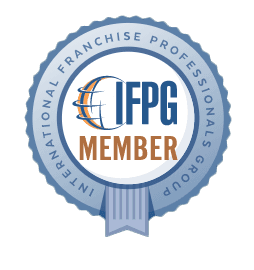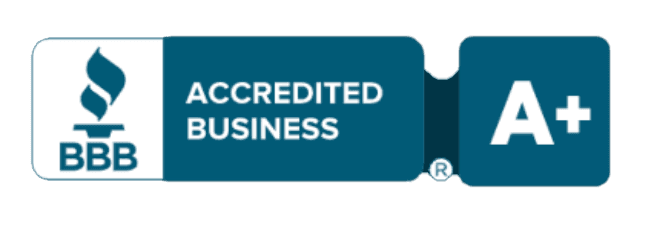Save on 2025 Taxes: 5 Key Strategies to Maximize Savings

When it comes to taxes, small business owners often think about planning in January. But waiting until the new year to act could mean missing out on critical opportunities to save on 2025 taxes. According to Louis Goldenberg, Director of Tax at xendoo, effective tax planning begins in 2024. Taking action before the year ends ensures you maximize deductions, reduce liabilities, and start 2025 on strong financial footing. Here are five key strategies to help small business owners save on 2025 taxes while staying ahead of the game. 1. Spend Strategically Before Year-End to Save on 2025 Taxes Tax planning can help reduce your taxable income by taking action now. Since taxes are calculated on a cash basis, any 2024 expenses can directly impact your 2024 tax return. Here’s how to save on 2025 taxes through year-end spending: Prepay expenses: Pay for early 2025 costs, such as vendor invoices or office supplies, to offset 2024 income. Invest in assets: Purchase equipment or machinery before December 31 to take advantage of the 60% bonus depreciation available in 2024. For more tips on end-of-year expenses, visit our Tax Planning page. 2. Prepay Taxes to Avoid Penalties and Maximize Savings Avoiding penalties is an essential part of tax planning. Overlooked estimated tax payments can lead to unnecessary fines. Here’s how to stay penalty-free and save: Make your final 2024 payment: Submit by January 15, 2025, to avoid penalties. Pay 110% of last year’s liability: This ensures coverage even if your 2024 income increases. Managing tax payments proactively helps protect your business from late fees and interest charges. 3. Leverage Depreciation for 2025 Tax Savings Depreciation offers a valuable opportunity to reduce your taxable income. With the 60% bonus depreciation rate available for 2024, now is the time to make strategic investments. Purchase long-term assets: Buy tools or equipment to improve operations and qualify for deductions. Optimize your strategy: Take full advantage of depreciation to save on 2025 taxes. Planning asset purchases carefully allows you to maximize your savings while upgrading your business. 4. Hire Family Members for Tax-Free Benefits Hiring family members is a creative way to reduce your taxable income while supporting your family. Louis Goldenberg suggests these steps: Set up a family LLC: Pay your children under 18 for tasks like office work or organizing inventory. Stay below the tax threshold: Payments within the threshold are often tax-free for your child while deductible for your business. This strategy benefits your family and provides meaningful tax savings. 5. Optimize Inventory Management Inventory-heavy businesses can leverage inventory purchases as a tax-saving strategy. Deducting inventory expenses for 2024 purchases can lower your taxable income: Buy inventory in December: Deduct costs for supplies or stock you plan to use in early 2025. Review unsold inventory: Depending on your tax strategy, consider expensing unsold 2024 inventory now or deferring it to next year. Strategic inventory management can lead to significant savings and smoother financial planning. Proactive Tax Planning Starts Now Don’t wait until the new year to think about taxes. Small actions now can lead to big savings when you save on 2025 taxes. Staying organized, prepaying taxes, and leveraging deductions can help reduce liabilities and set your business up for success. Looking for expert help? xendoo offers personalized tax strategies and real-time insights to help small business owners maximize savings. Schedule a FREE 15-minute consultation today to start planning for 2025.
5 New Year’s Resolutions for Small Business Success in 2025

Small Business Resolutions The beginning of a new year is a natural time for reflection and goal-setting, and this applies to businesses just as much as individuals. For small business owners, 2025 is full of opportunities to strengthen operations, build deeper customer connections, and achieve new milestones. To help you make the most of this year, here are five impactful small business resolutions designed to boost growth and efficiency while keeping your team and customers at the heart of everything you do. 1. Prioritize Digital Transformation Digital transformation has shifted from being an optional enhancement to a necessary evolution for businesses of all sizes. In 2025, small businesses that embrace technology will find themselves better equipped to adapt to market demands, reduce costs, and improve customer satisfaction. Leverage AI for Strategic Insights: AI tools can elevate your business planning and operations. For instance, tools like ChatGPT can assist in brainstorming content strategies, drafting compelling copy for marketing campaigns, or analyzing customer feedback to identify trends. By integrating AI into your workflow, you can save time and focus on creative decision-making, while improving the quality of your outputs. Strengthen Your Digital Security: As businesses increasingly rely on digital tools, cybersecurity becomes critical. Ensure your systems are protected by using strong passwords, enabling two-factor authentication, and investing in reliable security software. Regularly back up your data and train your team on recognizing potential threats, such as phishing attempts, to safeguard your operations. Click here to read Cybersecurity 101 for Small Businesses: Essential Tips to Protect Your Data. Integrate Cloud-Based Solutions: Transitioning to cloud-based tools for file storage, collaboration, and project management can boost efficiency and accessibility. Platforms like Google Workspace or Microsoft 365 allow your team to access files and work collaboratively from anywhere, making remote work and on-the-go productivity seamless. This also ensures your data is backed up and protected in secure, offsite servers. 2. Enhance Financial Management Sound financial management is one of the most important aspects of running a successful business, yet it’s often one of the most overlooked. In 2025, add to your small business resolutions to make financial organization and planning a top priority. Key strategies for improved financial health include: Regular Financial Reviews: Schedule time each month to review your income, expenses, and cash flow. This habit can help you identify patterns, spot inefficiencies, and plan for upcoming expenses. Tax Planning: Avoid scrambling during tax season by preparing throughout the year. Keep organized records of expenses and consult with a tax professional to maximize deductions. Outsource Accounting Tasks: If managing finances feels overwhelming, outsourcing can save time and reduce stress. Partnering with an expert service like xendoo ensures your bookkeeping and accounting are handled professionally, leaving you free to focus on growing your business. Being proactive about your finances helps you to make more informed decisions about investments, hiring, and expansion. 3. Focus on Customer Retention Attracting new customers is essential, but retaining existing customers is even more valuable. Studies consistently show that loyal customers spend more, refer others, and cost less to retain compared to acquiring new ones. Make 2025 the year you deepen your relationship with your current customers. Steps to enhance customer retention: Offer Personalized Experiences: Use customer data to tailor recommendations, emails, or promotions to individual preferences. For example, an online store might recommend products based on previous purchases. Implement a Loyalty Program: Reward repeat customers with points, discounts, or exclusive perks. These programs can encourage continued engagement and spending. Proactively Gather Feedback: Use tools like SurveyMonkey or Google Forms to collect customer feedback. This helps you identify areas for improvement and shows customers that their opinions matter. Small changes can make a big difference. For instance, a local fitness studio could offer a free personal training session after 10 class visits or send a personalized message to members congratulating them on reaching a milestone. These gestures build trust and goodwill, keeping your business top of mind. 4. Invest in Team Development A skilled, motivated team is a cornerstone of any thriving business. In 2025, prioritize your employees’ growth and well-being to create a strong foundation for success. How to invest in your team: Provide Ongoing Training: Equip employees with the skills they need to excel. Whether it’s customer service training, technical certifications, or leadership workshops, professional development opportunities keep your team sharp and engaged. Recognize and Reward Contributions: A simple acknowledgment of hard work goes a long way. Celebrate wins, highlight standout performances, and consider implementing incentives like bonuses or extra time off. Foster a Positive Workplace Culture: Create an environment where employees feel valued, supported, and heard. Regular one-on-one check-ins and open communication channels can make all the difference. For example, a tech support company might invest in ongoing training for its team to stay updated on the latest software and troubleshooting techniques. Not only does this improve the customer experience by resolving issues more effectively, but it also enhances employee confidence and satisfaction. 5. Expand Your Reach Through Strategic Marketing Marketing is the engine that drives visibility and growth. In 2025, resolve to make your marketing efforts more strategic, targeting the right audience with the right message at the right time. Ways to elevate your marketing strategy: Leverage Social Media Trends: Platforms like TikTok and Instagram continue to dominate, particularly with younger audiences. Short-form video content, behind-the-scenes glimpses, and user-generated content can boost engagement. Invest in Paid Advertising: Consider using tools like Google Ads or Meta Ads Manager to run targeted campaigns. Paid ads can drive immediate traffic and conversions, especially when paired with strong landing pages. Create Valuable Content: Blogs, videos, and downloadable resources establish your expertise and attract potential customers. For example, a fitness studio might create a free eBook with home workout tips to build brand awareness and grow its email list. Local businesses should also tap into community marketing opportunities. Partner with other local businesses for events or promotions, sponsor local initiatives, or optimize your Google Business profile to attract nearby customers. Elevate Your
The Complete Breakdown of a Fractional CFO

What Is a Fractional CFO, and Do I Need One? As your business grows, so do its financial complexities. You may find yourself needing more strategic financial guidance than a bookkeeper or accountant can provide but aren’t ready to hire a full-time Chief Financial Officer (CFO). This is where a fractional CFO can be the perfect solution. But what exactly is a fractional CFO, and how do you know if your business needs one? Let’s dive in. What Is a Fractional CFO? A fractional CFO is a highly experienced financial professional who works with your business on a part-time or contract basis. Instead of hiring a full-time CFO, which can be costly, you gain access to expert financial guidance and strategic planning for a fraction of the cost. Key Responsibilities: Financial Strategy Development: Helps set long-term financial goals and creates actionable plans to achieve them. Cash Flow Management: Ensures you have the liquidity to sustain operations and fund growth opportunities. Budgeting and Forecasting: Provides accurate financial projections to guide your decision-making. Financial Reporting: Delivers insights from your financial data to help you understand your business’s performance. Fundraising and Investor Relations: Assists in securing funding and managing relationships with investors or stakeholders. Risk Management: Identifies financial risks and implements strategies to mitigate them. Benefits of Hiring: Cost Efficiency: Provide top-tier expertise without the expense of a full-time hire. You only pay for the time and services you need. Flexibility: Whether you need help for a few hours a month or on an ongoing basis, fractional CFOs offer tailored services that adapt to your business’s needs. Scalability: Ideal for businesses in growth mode, offering strategic support to scale operations and manage increased financial demands. Expertise Without Overhead: You gain access to a seasoned financial professional with experience across industries, often bringing fresh perspectives and innovative solutions. Do I Need a Fractional CFO? Here are some common signs your business can benefit: 1. You’re Experiencing Rapid Growth Growth is exciting, but it also introduces new challenges, like managing cash flow, planning for expansion, and ensuring profitability. A fractional CFO can guide you through these complexities with a strategic approach. 2. You Need Help Securing Funding If you’re seeking investors, loans, or other forms of funding, a fractional CFO can prepare the financial documents, forecasts, and pitches needed to build confidence with stakeholders. 3. Your Financial Data Feels Overwhelming If your financial reports are hard to interpret or you’re unsure about your profitability and margins, a fractional CFO can translate the numbers into actionable insights. 4. You Want to Improve Profitability Identify inefficiencies, reduce unnecessary expenses, and implement strategies to increase your bottom line. 5. You’re Planning a Major Transition Whether it’s a merger, acquisition, or significant investment, a fractional CFO can provide the expertise to navigate these high-stakes decisions. 6. You Lack a Clear Financial Strategy If you’re operating without a solid financial roadmap, a fractional CFO can help create one, aligning your financial goals with your business objectives. How Does a Fractional CFO Work with Your Business? They typically operate on a flexible schedule, providing support remotely or in person, depending on your needs. They might work with your existing team or independently, focusing on specific projects or ongoing financial management. Engagement Models: Project-Based: For specific tasks like fundraising, restructuring, or financial planning. Ongoing Support: For continuous oversight and guidance over a set number of hours per month. Interim CFO: Filling the gap while you search for a permanent CFO. Is This Right for Every Business? Not all businesses need a fractional CFO. For startups or very small operations with straightforward finances, a bookkeeper or accountant may suffice. However, if your business is growing, evolving, or facing financial challenges, the expertise can be transformative. Conclusion A fractional CFO offers strategic financial expertise at a fraction of the cost of a full-time hire. If your business is navigating growth, managing complex finances, or planning for the future, this could be the missing piece to help you thrive. Evaluate your current financial needs and consider how a fractional CFO could provide the guidance and clarity to achieve your business goals.
Guide to Tracking and Maximizing Tax Write-Offs

Tax write-offs are one of the most effective tools small business owners can use to reduce taxable income and keep more money in their business. But tracking and maximizing these deductions requires a strategic, year-round approach. This guide will help you understand tax write-offs, common mistakes, and practical strategies to ensure you’re not leaving money on the table. What Are Tax Write-Offs? Tax write-offs, also known as deductions, are expenses that the IRS allows you to subtract from your total income to reduce your taxable income. The result? You pay less in taxes. Write-offs cover a wide range of expenses, but only those that are considered “ordinary and necessary” for your business qualify. Examples include: Office expenses: Rent, utilities, and office supplies. Technology and tools: Software subscriptions, website hosting, and equipment. Travel costs: Flights, lodging, and meals during business trips. Marketing expenses: Social media ads, email campaigns, and graphic design fees. Knowing what counts as a deduction can have a significant impact on your tax bill. However, many small business owners miss out on these benefits simply because they fail to track their expenses properly. Why Tracking Expenses Year-Round Is Critical Many business owners wait until tax season to organize their finances, leading to overlooked deductions and unnecessary stress. Tracking your expenses consistently throughout the year ensures: Accuracy: You’ll have a clear record of deductible expenses when it’s time to file taxes. Preparedness: Avoid scrambling to find receipts or reconcile expenses. Savings: A well-organized system makes it easier to spot missed deductions. Simple ways to track expenses include: Using accounting software like QuickBooks or Xero. Dedicating a business bank account and credit card for all transactions. Keeping digital copies of all receipts. The Most Overlooked Tax Write-Offs Even the most diligent business owners can miss deductions. Here are some commonly overlooked write-offs: Home office expenses: If you work from home, you can deduct a portion of your rent or mortgage, utilities, and internet. Mileage: Track the miles driven for business using an app like MileIQ. Professional development: Expenses for training courses, certifications, and workshops qualify. Business meals: Meals with clients or team members are deductible at 50%. You’ll avoid leaving money on the table by staying informed about these potential write-offs. Strategies to Maximize Your Tax Write-Offs Maximizing deductions isn’t just about tracking every dollar—it’s about being proactive. Here’s how: Plan Ahead: Meet with a tax professional early in the year to discuss strategies tailored to your business. Organize Expenses by Category: Use clear categories like marketing, travel, and supplies to make deductions easier to claim. Review Past Returns: If you’ve missed deductions in prior years, consider filing an amended return. Proactive planning ensures you take advantage of every opportunity to reduce your tax liability. Tools and Best Practices for Streamlining Tracking Simplify the process of tracking your expenses with these tools and practices: Apps for tracking expenses: Try Expensify or Wave for easy expense management. Set up automation: Link your business accounts to software that automatically categorizes expenses. Review monthly: Dedicate time each month to review and reconcile your transactions. Creating consistent habits around tracking will save time and money when tax season arrives. The Role of Professional Bookkeeping Professional bookkeeping is a game-changer for small business owners. Having accurate, up-to-date books means: You’ll never miss deductions due to disorganized records. You’ll have clean financials ready for tax season and beyond. You can make informed decisions about growth and scaling. Bookkeepers don’t just organize your finances—they provide insights that help you plan for the future. Partnering with experts ensures that your business’s financial health stays a priority. Key Takeaways Tracking and maximizing tax write-offs doesn’t have to be overwhelming. You’ll unlock savings and gain financial clarity by staying organized, leveraging technology, and seeking professional support. Ready to start 2025 on solid financial footing? Begin by taking control of your write-offs today. Schedule a consultation to learn how xendoo can support your business’s bookkeeping, accounting, and tax needs.
Lifestyle vs. Growth Business: What Sets Them Apart?

As a business owner, one of the most crucial decisions you’ll make is choosing the type of business model that aligns with your personal and professional goals. Should you focus on creating a lifestyle business that offers a balanced work-life dynamic, or is your ambition geared towards a growth business that seeks rapid expansion and market dominance? Understanding the key differences between these two approaches can help you make an informed decision that suits your priorities and lifestyle. 1. Time Investment Lifestyle Business: If you prefer a more balanced approach to work and life, a lifestyle business might be the right fit. This model typically requires less time commitment, allowing you to work part-time and have more flexibility to enjoy personal activities and family time. Growth Business: On the other hand, a growth-focused business demands a significant time investment. Owners often work long hours to drive expansion and achieve their ambitious financial targets. This intense focus on scaling can result in a considerable reduction in personal time and leisure. 2. Revenue Goals Lifestyle Business: A lifestyle business aims for a steady, reliable income to support a comfortable lifestyle. Revenue goals are usually modest, focused on covering personal expenses and maintaining a balanced life without the pressure of high financial targets. Growth Business: Growth businesses, however, set ambitious revenue goals and focus on scaling operations. The aim is often to achieve high financial returns and reinvest profits to fuel further expansion and capture a larger market share. 3. Work-Life Balance Lifestyle Business: Work-life balance is a top priority for lifestyle business owners. The business is designed to fit around personal life and family commitments, allowing for more leisure time and flexibility. Growth Business: In contrast, growth businesses often sacrifice work-life balance for the sake of expansion. The intense focus on scaling and competitive positioning can lead to long hours and reduced time for personal and family life. 4. Business Objectives Lifestyle Business: The objectives of a lifestyle business revolve around personal satisfaction, steady income, and enjoying work. The business is often built around the owner’s interests and lifestyle preferences, with less emphasis on aggressive growth. Growth Business: Growth businesses focus on market dominance, rapid expansion, and significant financial returns. Aggressive strategies are employed to achieve high growth and establish a strong competitive position. 5. Investment in Resources Lifestyle Business: In a lifestyle business, investment in resources is typically limited. Budgeting focuses on maintaining current operations rather than investing in new technologies or scaling efforts. Growth Business: Growth businesses require high investment in resources such as technology, talent, and marketing. Significant funds are allocated to scaling operations and capturing market share, often involving substantial financial outlays. 6. Risk Tolerance Lifestyle Business: Owners of lifestyle businesses usually have a low risk tolerance. They prefer stability and are cautious about taking on significant financial or operational risks. Growth Business: In contrast, growth businesses often embrace a higher risk tolerance. Owners are willing to take calculated risks to achieve rapid growth, which can involve financial uncertainty and operational challenges. 7. Customer Base Lifestyle Business: A lifestyle business typically serves a niche market or a loyal customer base. The focus is on maintaining personal relationships and providing customized service. Growth Business: Growth businesses aim to build a large and diverse customer base. Strategies include scaling operations and reaching new markets to increase customer acquisition and drive significant revenue growth. Conclusion Choosing between a lifestyle business and a growth business involves considering your personal goals, time commitment, and vision for the future. While a lifestyle business offers flexibility and a balanced approach to work and life, a growth business demands significant time and investment for rapid expansion and high financial returns. Reflect on your priorities and make the choice that best aligns with your aspirations and lifestyle. No matter which path you choose, having reliable financial management is crucial. That’s where xendoo comes in. Whether you’re focused on maintaining a balanced lifestyle or scaling your business for rapid growth, xendoo’s comprehensive bookkeeping and accounting services can support your needs. Our catch-up bookkeeping services ensure your financial records are accurate and up-to-date, giving you more time to focus on what matters most – running a successful business.
Gain Profitability & Boost Productivity: Professional Services

In the world of professional services, time is money. Whether you’re a consultant, lawyer, accountant, marketer, or other service provider, your business revolves around selling your time and expertise. So, how can you increase profitability without simply raising your rates? The answer lies in optimizing how you use your time, enhancing productivity, and ensuring your pricing model aligns with your business goals and market standards. Here’s how you can gain time back and boost profitability in your professional services business: 1. Boost Productivity: Get More Out of Every Minute The key to increasing profitability in a time-based business is to maximize the value of every minute. Here’s how to do it: Tool-Specific Training: Invest in tool-specific training sessions where your team can learn the ins and outs of the software and technology you use daily. For example: Project Management Software (e.g., Asana, Trello): Conduct a workshop where you show your team how to organize tasks, set deadlines, and collaborate on projects within the platform. Demonstrate how to create templates for recurring tasks to save time. This not only helps in task management but also ensures that everyone is on the same page. Time-Tracking Tools (e.g., Toggl, Harvest): Train your team on how to accurately track their time using time-tracking software. Provide examples of how detailed time entries can help in identifying inefficiencies and areas where time can be saved. Encourage your team to regularly review their tracked time to find patterns and optimize their work routines. Communication Platforms (e.g., Slack, Microsoft Teams): Show your team how to use communication tools effectively. For instance, teach them how to use channels to organize conversations by project or department, how to set notifications to avoid distractions, and how to use integrations (like file sharing or task assignments) to streamline communication. Leverage Technology: Three Monitors Setup: If your team isn’t using a multi-monitor setup yet, it’s time to make the switch. Having three monitors can significantly increase productivity by reducing the time spent switching between windows, allowing for more seamless multitasking. This simple upgrade can help your team handle tasks more efficiently, ultimately increasing billable hours without extending work hours. The Right Tech Stack: Investing in the right technology can streamline operations, automate routine tasks, and reduce manual errors. For example, project management software like Asana or Trello can help keep tasks organized, while communication tools like Slack can improve team collaboration. Time-tracking apps can also help ensure that billable hours are accurately recorded, ensuring you get paid for every minute of work. 2. Re-evaluate Your Pricing Model Your pricing model can significantly impact your profitability. It’s crucial to ensure that your rates are aligned with the value you provide and are competitive in your region and industry. Are You Priced Correctly? Take a close look at your current pricing structure. Are you charging enough for your services? Are your rates in line with industry standards in your region? Underpricing can lead to burnout as you work more hours for less pay, while overpricing can drive clients away. Finding the right balance is key to maximizing profitability without overextending yourself or your team. Regularly Review and Adjust Pricing: The market, your business, and client expectations are always evolving, and so should your pricing. Regularly reviewing and adjusting your rates ensures that you remain competitive and profitable. Market Analysis: Conduct a market analysis at least once a year to understand how your pricing compares to competitors. If you’re undercharging, it may be time to increase rates to match the market. If you’re overcharging, consider adding more value to justify the higher price point or adjusting your rates accordingly. Cost Analysis: Analyze your operating costs and ensure that your pricing covers these costs while providing a healthy profit margin. Rising costs, such as salaries, software subscriptions, and other overheads, may necessitate a pricing adjustment. Client Feedback: Seek feedback from your clients to understand their perception of the value they receive for the price they pay. Use this feedback to fine-tune your pricing strategy and ensure it aligns with client expectations. 3. Reclaim Your Time as a Business Owner As a business owner, your time is your most valuable asset. Here’s how you can gain some of it back: Delegate and Automate: Don’t get bogged down in tasks that can be delegated or automated. Use accounting software to automate invoicing, payroll, and expense tracking. Delegate administrative tasks to a virtual assistant or office manager. By freeing yourself from these routine tasks, you can focus on strategic growth and client relationships, which are more valuable uses of your time. Implement Efficient Processes: Streamline your business processes to save time. For example, standardize your client onboarding process, create templates for common tasks, and set up automated workflows where possible. Efficient processes reduce the time spent on repetitive tasks and help ensure your business runs smoothly even when you’re not directly involved. Conclusion In professional services, increasing profitability doesn’t always mean working more hours. You can enhance your profitability while maintaining a balanced, sustainable lifestyle by boosting productivity, ensuring your pricing is right, and reclaiming your time as a business owner. With the right strategies and tools, such as those offered by xendoo, you can make every minute count. xendoo’s expert bookkeeping and financial services ensure that your financials are always up-to-date and accurate, giving you the peace of mind and freedom to focus on what matters most—growing a thriving, profitable business. Let xendoo handle the numbers so you can focus on scaling your success.
7 Tax-Saving Hacks Every Business Owner Needs

Maximizing tax savings is essential for any business aiming to optimize its financial health. By strategically leveraging tax-saving opportunities, you can reduce your taxable income, improve your cash flow, and allow you to reinvest in your business. Here are seven effective ways to enhance your tax savings: 1. Change Your Business Structure Changing your business to an S Corporation (S Corp) can significantly maximize your tax savings by offering a more efficient tax structure. Different from a C Corporation, where profits are taxed at both the corporate level and again as dividends to shareholders, an S Corp allows income and losses to pass through directly to shareholders’ personal tax returns. This structure avoids the double taxation issue and can lower your overall tax burden. Additionally, S Corp shareholders can receive a portion of their income as distributions, which are not subject to self-employment taxes, potentially reducing Social Security and Medicare tax liabilities. By leveraging deductions for business expenses and retirement plan contributions, along with strategically distributing income, an S Corp can provide considerable tax benefits and financial flexibility. 2. Invest in Your Business Using Section 179 Section 179 offers a great way to boost your business’s tax savings by letting you deduct the full cost of qualifying equipment and software in the year you buy or lease it. Instead of spreading the deduction over several years, you can take the entire amount off your taxable income right away. For example, if you purchase $50,000 worth of new machinery or software, you can deduct the full $50,000 this year, rather than over a longer period. Additionally, if you lease equipment, the lease payments can also be deducted under Section 179, making it easier to manage cash flow while still reaping the tax benefits. This approach not only reduces your taxable income but also frees up cash for other investments or business needs. 3. Prepay Now Your Expenses Now, Save Later By prepaying certain expenses before the end of the year, you can deduct these costs in the current tax year, which reduces your taxable income for that year. For instance, if you prepay your rent for January and February before the year ends, you can claim those rent payments as deductions for the current year, lowering your tax liability. Similarly, Prepaying for services like advertising or insurance can also help you save on taxes. By paying for these expenses before the end of the year, you can claim them as deductions right away. This means you can reduce your taxable income for the current year, which lowers your tax bill. It also helps improve your cash flow and makes it easier to plan your finances. This simple strategy not only cuts your current tax expenses but also gives you better control over your financial planning. 4. Write Off Bad Inventory According to IRS guidelines, businesses can deduct the cost of inventory that is obsolete, damaged, or otherwise unsellable. For example, if you run a print manufacturing company and have old paper and supplies that are no longer useful, you can write off these items as a loss. If you donate them to a local school or nonprofit, you can often claim a charitable contribution deduction as well, potentially increasing your tax savings. Similarly, if you sell sneakers and have old models that aren’t selling, you can write off the cost of these unsold items and donate them. By writing off bad inventory, you reduce your taxable income, which lowers your overall tax liability, and also provide valuable contributions to your community. Just ensure that all inventory write-offs and donations are properly documented and comply with IRS regulations. 5. Rent Your Home to Your Business for Meetings Renting your house for company meetings can be a smart way to maximize your business’s tax savings. According to IRS guidelines, you can rent your home to your business for up to 14 days a year without having to report the rental income, as long as the rental arrangement is at fair market value and used for business purposes. This rental income remains tax-free, and your business can deduct the rental expense as a business cost. For instance, if you charge your business a fair market rate for using your home for meetings or events, your business can deduct this cost, reducing your overall taxable income. This approach not only provides a way to earn additional income without paying taxes on it but also helps cut down your business’s tax liability. Just make sure the rental arrangement is at fair market value and properly documented to stay compliant with IRS regulations. 6. Fund a Retirement Plan Funding a retirement plan is a great way to save on taxes for your business. Contributions to retirement plans, like a simple / solo 401(k) or SEP IRA, are tax-deductible, which means they reduce your taxable income for the year. For example, if your business puts $20,000 into a SEP IRA, that amount is deducted from your taxable income, lowering your tax bill. This not only cuts your current taxes but also helps you save for the future. Additionally, having a retirement plan can improve employee satisfaction and attract talented workers. Overall, funding a retirement plan offers immediate tax benefits and supports long-term financial security for both you and your employees. 7. Hire a Tax Advisor Bringing a tax advisor on board can significantly enhance your business’s ability to maximize tax savings. Tax advisors are experts in navigating complex tax laws and can identify opportunities to reduce your tax liability that you might overlook. They can help with strategic planning, ensure compliance with current regulations, and provide advice on deductions, credits, and other tax-saving strategies tailored to your business. With their guidance, you can optimize your tax position and avoid costly mistakes. At xendoo, our team of expert tax advisors is here to help you maximize your tax savings. Plus, our comprehensive accounting and bookkeeping services ensure your financial records are meticulously managed, giving you the clarity and
5 Bookkeeping Tips for Small Businesses

Financial forecasting is a vital aspect of running a successful small business. It involves predicting future financial performance based on historical data, current trends, and strategic plans. Effective forecasting relies on accurate bookkeeping and thoughtful analysis. Implementing these top five bookkeeping tips will help you enhance your financial forecasting, make informed decisions, and drive your business forward. 1. Maintain Accurate Financial Records Why It Matters: Accurate financial records are the bedrock of reliable forecasting. If your records are complete and correct, your forecasts will be correct, eliminating the potential of misguided strategies and missed opportunities. Tip: Invest in advanced bookkeeping software to keep your financial records precise and current. Tools like QuickBooks, Xero, and FreshBooks offer features that automate data entry, track expenses and income, and generate real-time financial reports. Regularly reconcile your bank statements with your records to ensure consistency and accuracy. This practice helps you avoid discrepancies and provides a solid foundation for forecasting. 2. Develop a Detailed Budget Why It Matters: A well-constructed budget acts as a financial blueprint for your business. It helps you set realistic revenue targets, allocate resources effectively, and anticipate future expenses, all of which are crucial for accurate forecasting. Tip: Start by outlining your fixed costs (such as rent, salaries, and insurance) and variable costs (such as utilities, marketing, and materials). Use historical data to project future revenue and account for seasonal variations and market trends. Incorporate a buffer for unexpected expenses. Regularly review and adjust your budget to reflect changes in your business operations, economic conditions, and industry trends. 3. Implement Cash Flow Projections Why It Matters: Cash flow projections are essential for ensuring your business has sufficient liquidity to cover its operational needs. Without accurate projections, you might face cash shortfalls, impacting your ability to pay bills, invest in growth, or respond to unforeseen challenges. Tip: Create detailed cash flow forecasts by analyzing past cash flows and considering future income and expenditures—factor in upcoming expenses, expected revenue, and any planned capital investments. Use forecasting tools and software to automate this process and generate periodic reports. Regularly update your projections based on actual performance and changes in your business environment. This proactive approach helps you manage cash flow effectively and avoid liquidity issues. 4. Analyze Financial Statements Regularly Why It Matters: Financial statements, including income statements, balance sheets, and cash flow statements, provide critical insights into your business’s financial health. Regularly analyzing these documents helps you identify trends, spot potential issues, and make data-driven decisions. Tip: Schedule monthly or quarterly reviews of your financial statements to stay informed about your business’s performance. Focus on key financial metrics such as profit margins, operating expenses, and revenue growth. Use this information to adjust your financial forecasts and strategies. Consider working with a financial advisor or accountant to help interpret your statements and provide expert guidance on strategic decisions. 5. Leverage Historical Data for Forecasting Why It Matters: Historical financial data is a valuable reference point for forecasting. Analyzing past performance helps you understand trends, set realistic goals, and predict future financial outcomes more accurately. Tip: Gather and analyze historical data on sales, expenses, cash flow, and other financial metrics. Identify patterns and correlations that can inform your forecasting assumptions. For example, if you observe seasonal sales spikes, incorporate these patterns into your future projections. Additionally, use industry benchmarks and market research to enhance the accuracy of your forecasts and align them with broader market trends. Effective financial forecasting is a key component of successful business management. By maintaining accurate records, developing a detailed budget, implementing cash flow projections, analyzing financial statements, and leveraging historical data, you can create reliable forecasts that support strategic decision-making and drive your business’s success. At xendoo, we are committed to helping small businesses master their financial management and forecasting. Our expert bookkeeping services and personalized support are designed to provide you with the insights and tools you need to thrive. Contact us today to discover how we can assist you in optimizing your financial practices and achieving your business goals. For more expert tips to avoid costly catch-up bookkeeping mistakes click here!
Top 5 Tax-Friendly Cities for Small Businesses

Small business owners know that every penny counts when paying taxes. The difference between a high and low tax burden can significantly impact a small business’s likelihood of survival. That is why picking the right city to base a business operation is important for entrepreneurial success. From small cities to major ones, certain U.S. cities shine as beacons of tax-friendliness for small businesses. These top 5 cities offer the perfect atmosphere for entrepreneurs to start and grow their business aspirations without being overtaken by huge tax requirements because of their low corporate tax rates, small business incentives, and nice regulatory framework. Top 5 Tax-Friendly Cities for Small Businesses Selecting the right city to start or expand a small business is a critical decision that can have far-reaching implications for the business venture’s success. For a small enterprise, some necessary factors differ drastically from one city to another or state to state, directly affecting the viability and potential growth, including tax policies and business environment. The general cost of doing business is hugely formed in the tax environment. Low or no taxes on personal incomes and good corporate tax rates substantially reduce the imposition on small businesses. This, therefore, means that they have a big share in what they make for reinvestment in growth initiatives. Highly taxed cities only strain the financial resources and, in turn, reduce the reinvestment opportunities. The capacity of a small firm to succeed can also be impacted by external variables, such as infrastructure, the regulatory environment, and the availability of competent workers, in addition to taxation. Cities with a robust talent pool, encouraging local governments, and a flourishing entrepreneurial ecosystem can provide small enterprises with invaluable resources and networking possibilities. General operational expenses and the cost of living in a given city ultimately affect the overhead costs and, thus, the profitability margins. Cities with lower living costs and affordable commercial real estate can offer a more cost-effective base for small businesses, allowing them to allocate resources strategically. Factors to Consider When Choosing a City for Your Small Business State and Local Taxes: One of the most critical factors to consider when selecting a city for your small business is the tax burden imposed by the state and the local. Corporate income, individual income, sales, and property tax rates vary tremendously from city to state. Learning these differences is understanding how they could greatly impact a business’s bottom line and cash flow. This can help in a big way since a city with amiable tax policies always ensures that you save a greater portion of your profits for reinvestment and growth. Business Environment and Support: Other very critical issues that apply to this, however, are the state of the general business environment and the support mechanisms that a city has, besides tax considerations. Entrepreneurial support in any city, with the city already having business development programs, incubators, accelerators, and avenues for networking, can help small businesses. Such resources will assist in navigating the challenges, source for industry insights, and get crucial contacts that could make a difference toward achieving growth and success. Industry Presence: If a small business operates in a specific industry, choose a city with a strong cluster. In other words, if you operate an industry business, locating in a city with a particularly strong cluster of the same business would boost your chances of tapping a pool of specialized talent, suppliers, or existing customers or clients. Again, working as a cluster or hub in the industry makes it easy to network, share knowledge, and keep tabs on the current trends and new ideas being put into practice. Cost of Living and Doing Business: The cost of living and operating costs within a city can truly drive the financial sustainability of a small business. Lower living expenses and the cost of commercial real estate in a city will help drive overhead costs down, leaving one with more resources to throw back into growth and development. High living and operating costs in a city will strain the finances and may limit an entrepreneur’s capacity for reinvestment in the business. Labor market: Location in the city should be based on the major availability of employment for your small business, and labor for the most highly skilled personnel is always available. A city with a tight labor market and highly educated employees forms a good source of access to high-level talent needed in innovation for productivity and growth. An indicator of lower employment rates can also translate to a competitive labor market and an easy job in luring and keeping top talent. Quality of Life: Quality of life in a city normally mirrors the satisfaction and retention of employees. The city’s interesting amenities, such as good schools, recreational activities, and cultural sites, can tip the scale toward moving to your city for potential employees. Entrepreneurs can attract and keep top talent, reduce turnover costs, and create a stable and productive workforce. Best Cities for Small Businesses Appleton, WI Appleton is located smack in the middle of Wisconsin, and it’s the number one place for small businesses to locate due to the low cost of living and the rising local economy. The vibrancy of this city is based on manufacturing, while the industries that deal with paper, machinery, and transportation equipment provide a solid heritage. Furthermore, there is a robust retail sector for these small businesses to tap into to meet the local community’s needs. This is possible due to the diversified economic environment in Appleton, coupled with the low cost of living, which promotes a strong entrepreneurial environment for business start-ups and growth. Fargo, ND Fargo, North Dakota, is a fast-growing tech city with plenty of opportunities for small businesses. Its strong job market stands out as a rapidly growing technology city with highly skilled employees. Fargo is slowly but steadily emerging as a point of interest for technology-savvy entrepreneurs who wish to set up ventures where the cost
8 Tips To Unlocking Small Business Success

Running a small business requires dedication, smart decision-making, and effective financial management. One of the cornerstones of financial health and growth for any business is effective bookkeeping. Here’s a detailed guide to help small business owners unlock success through meticulous bookkeeping practices. Understanding Bookkeeping Bookkeeping is the systematic documentation of all financial transactions within an organization. It involves recording, storing, and retrieving financial data, clearly showing a company’s financial health. Proper bookkeeping is critical for making informed business decisions, ensuring tax compliance, and fostering business growth. Key Terminology Familiarizing yourself with basic bookkeeping terminology is the first step: Assets: Resources owned by the business. Liabilities: Obligations owed by the business. Equity: The owner’s interest in the business. Revenue: Income generated from business operations. Expenses: Costs incurred to generate revenue. Setting Up Your Bookkeeping System Choosing the Right Method There are two primary methods of bookkeeping: Cash-Basis: Records transactions when cash is exchanged. It’s simpler but may not provide a complete financial picture. Accrual-Basis: This method records transactions when they are earned or incurred, giving a more realistic view of your company’s financial health. Understanding the differences between these methods is crucial for choosing the right approach for your business. Selecting Bookkeeping Software Choose software that matches your company’s size, industry, and specific needs. Accounting software can save time, enhance accuracy, and streamline business processes. Tools like the Profit Margin Calculator and the Free Burn Rate Calculator help you manage your finances effectively. Creating a Chart of Accounts This step involves listing all the accounts used in your accounting system. Accounts are grouped into assets, liabilities, equity, income, and expenses, tailored to your company’s needs. Recording Financial Transactions Importance of Timely and Accurate Recording To maintain the integrity of your financial data, ensure all transactions—sales, purchases, payments, and receipts—are recorded promptly and accurately. Digital accounting systems can automate processes, improve accuracy, and simplify information access. Managing Accounts Receivable and Payable Monitoring Payments and Invoices Keep track of customer invoices and payments to ensure timely collections and maintain healthy cash flow. Effective management of accounts receivable is key to maintaining a positive cash flow. Managing Vendor Bills and Payments Monitor vendor bills, ensure timely payments, and maintain positive supplier relationships to avoid late penalties. Maintaining Healthy Cash Flow Use strategies like controlling costs, following up on overdue payments, and timely invoicing to keep your cash flow positive. Learning how to maintain a healthy cash flow is essential for sustaining your business operations. Reconciling Accounts Bank Reconciliation Process Bank reconciliation involves comparing your accounting records with your bank statements to ensure accuracy. This process helps identify and correct discrepancies, enhancing financial management and decision-making. Generating Financial Reports Regular preparation of key financial reports is crucial for small business owners: Balance Sheet: Provides a snapshot of your company’s financial condition. Income Statement: Shows revenue and expenses over a period. Cash Flow Statement: Tracks cash movements in and out of the business. These essential financial reports provide insights into your company’s financial health, helping you recognize trends and make informed strategic decisions. Regular review, preferably monthly or quarterly, is recommended. Staying Compliant with Tax Obligations Understanding Tax Obligations Familiarize yourself with relevant tax regulations, including income tax, sales tax, and payroll tax. Keep accurate records and stay updated on tax laws to ensure compliance and avoid fines. Consulting a tax professional can provide valuable guidance and small business tax compliance tips. For additional support, consider resources from organizations like the Small Business Association. Seeking Professional Help Hiring an Accountant or Bookkeeper As your business grows, consider hiring a professional bookkeeper or accountant. They bring expertise, accuracy, and efficiency, allowing you to focus on core business activities. Choosing the Right Professional Evaluate potential bookkeepers or accountants based on their credentials, experience, and industry knowledge to ensure they meet your company’s needs. Conclusion Accurate bookkeeping is essential for the success and growth of any small business. By maintaining precise financial records, you gain valuable insights, make informed decisions, and ensure tax compliance. At xendoo, we understand the challenges small business owners face in managing their finances. Our comprehensive bookkeeping, catch-up, tax, and CFO services are designed to help you stay on top of your financial records and focus on what you do best—running your business. Contact us today to learn how we can support your company’s financial success. Key Takeaways: Best bookkeeping practices for small businesses include timely and accurate transaction recording. Understanding accrual vs cash basis accounting for small businesses helps choose the right method. Managing small business finances effectively involves using the right software and maintaining a healthy cash flow. Generating essential financial reports for small business owners is crucial for informed decision-making. Follow small business tax compliance tips to stay compliant with tax obligations.





